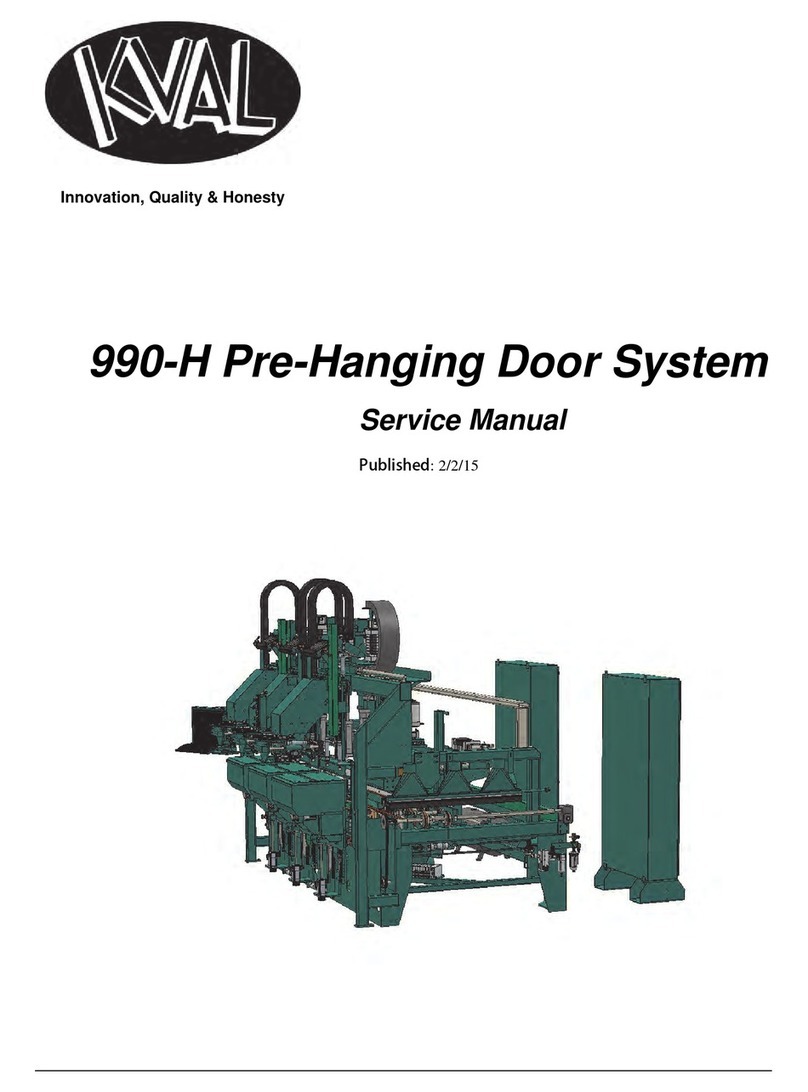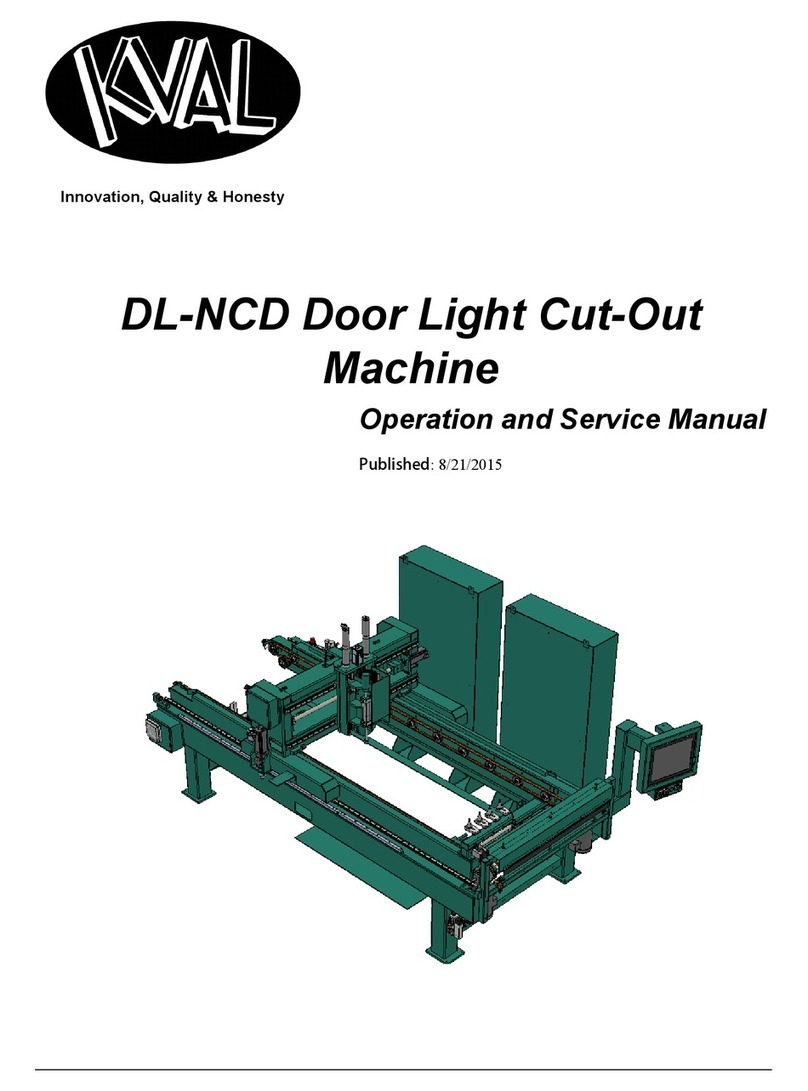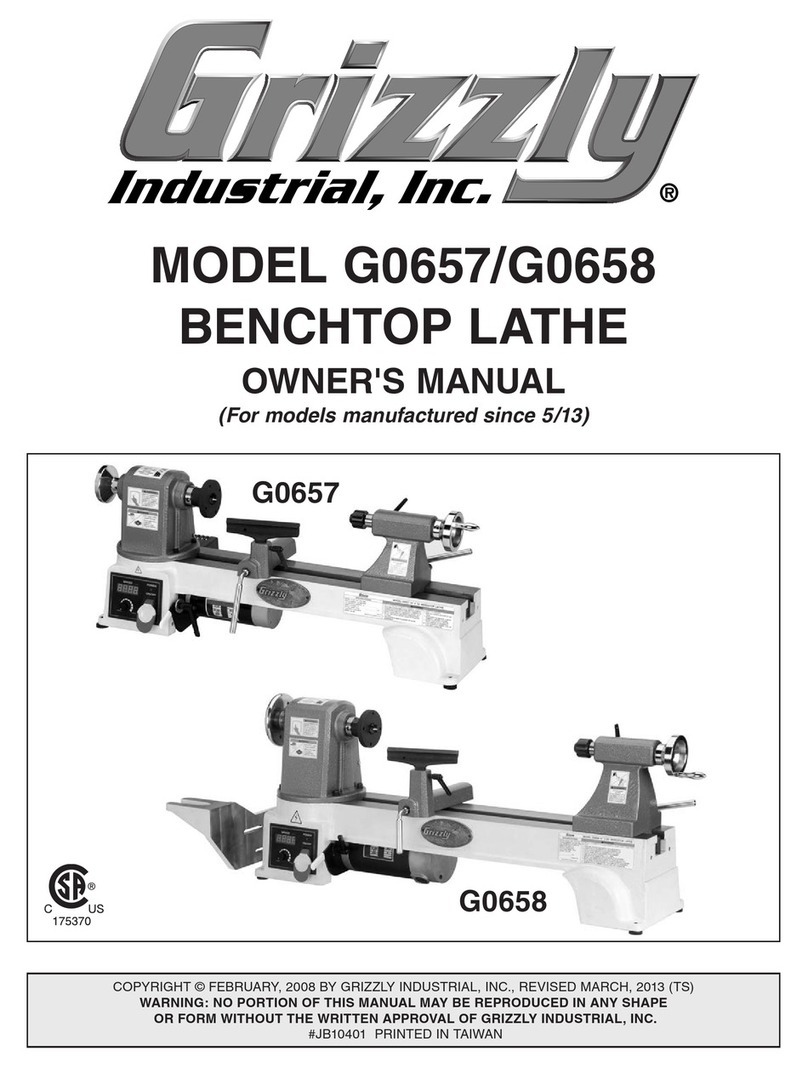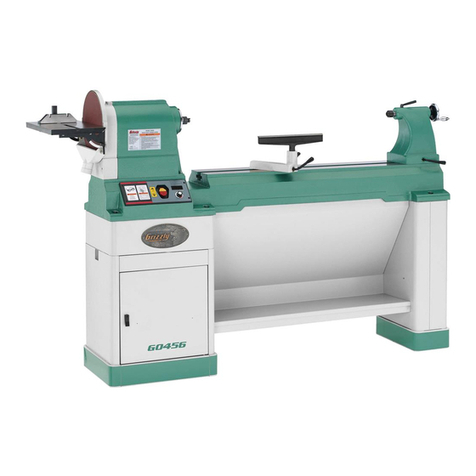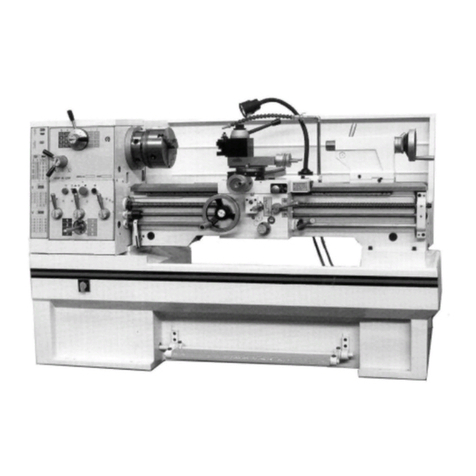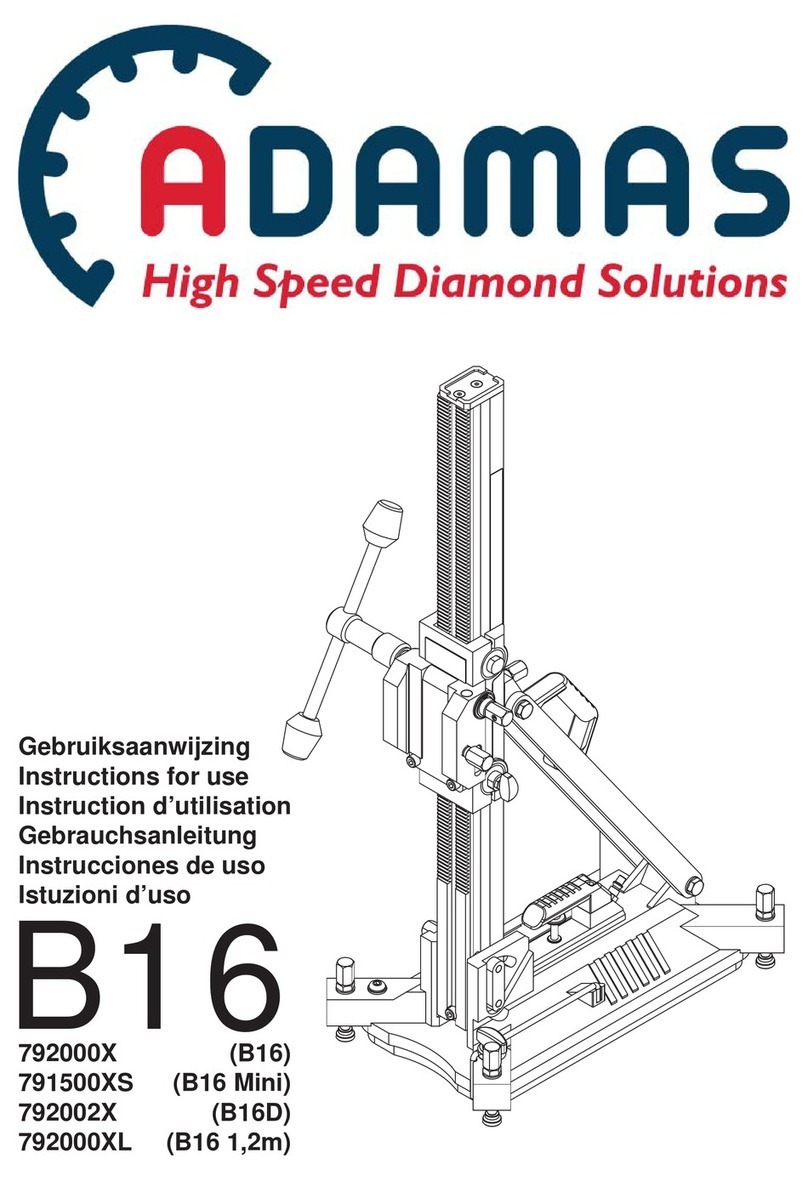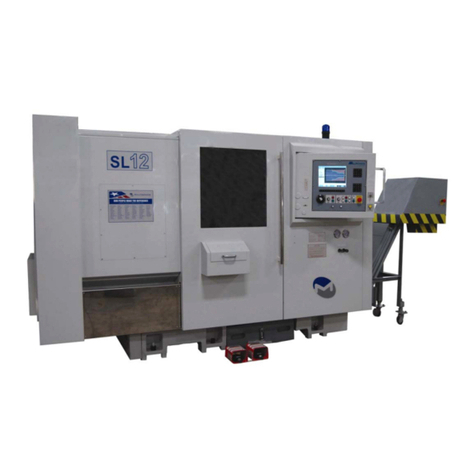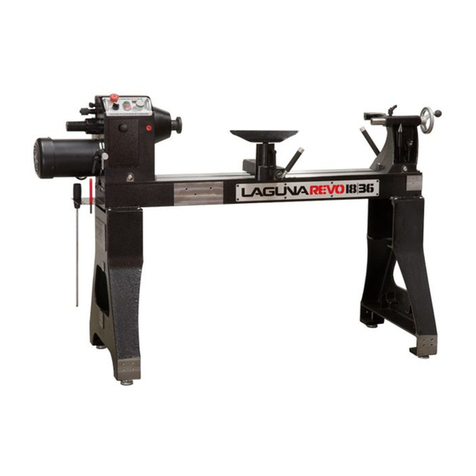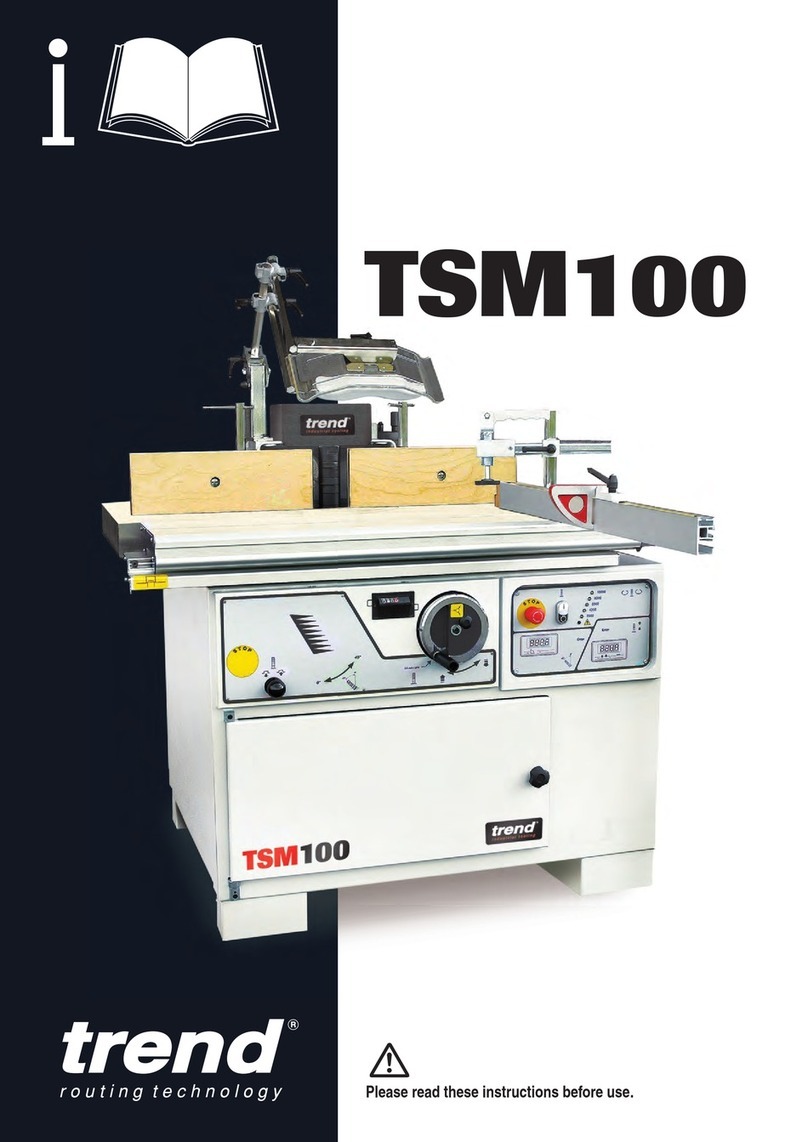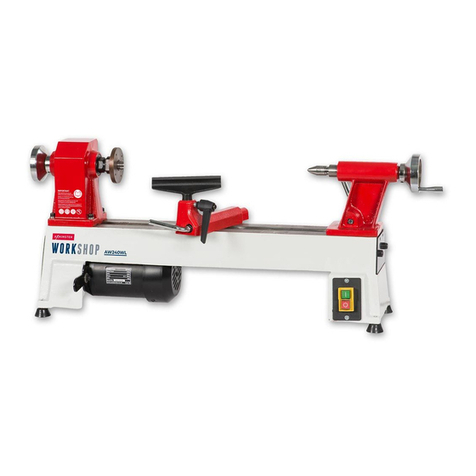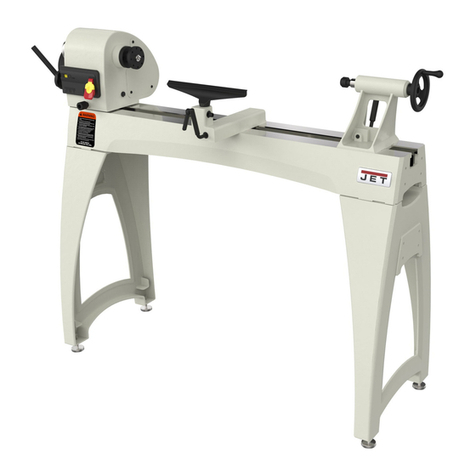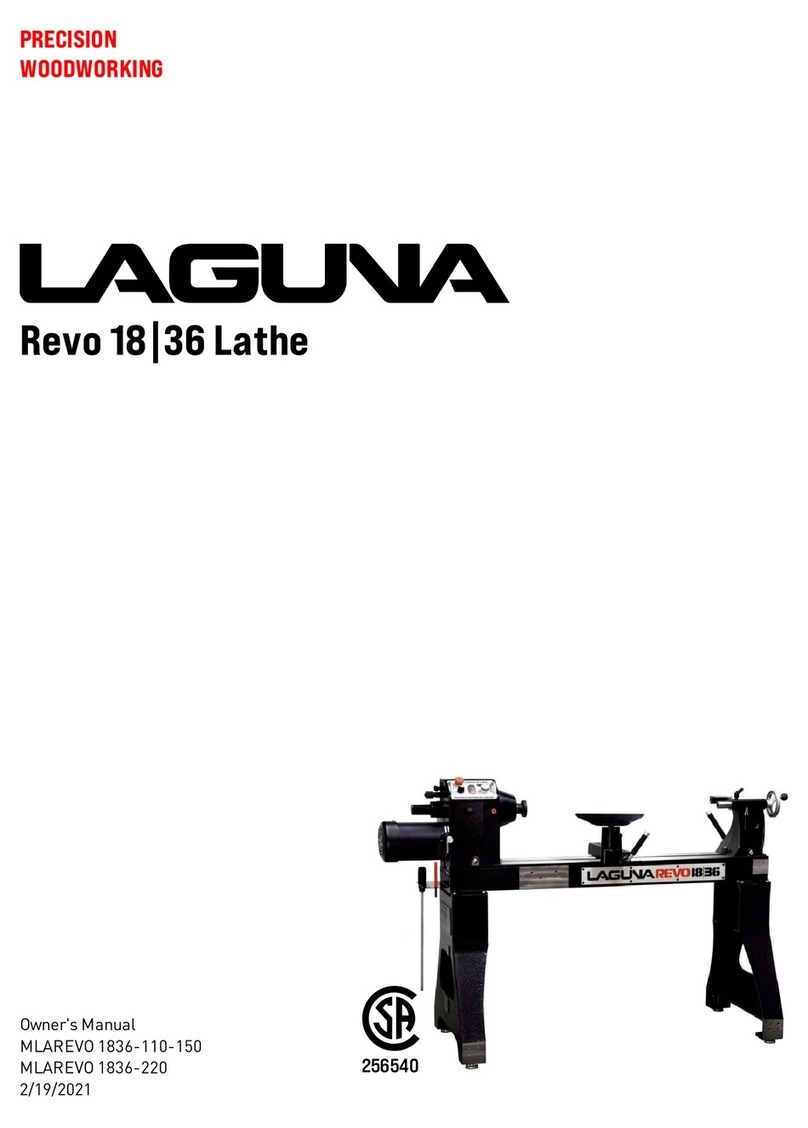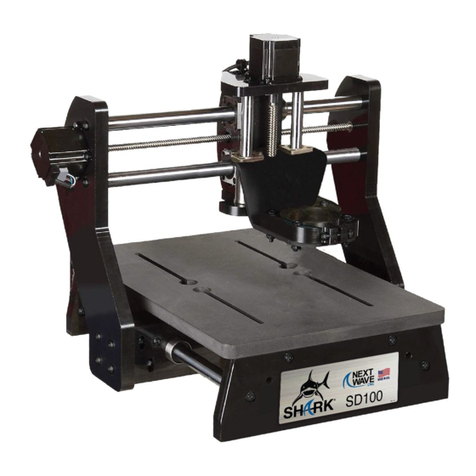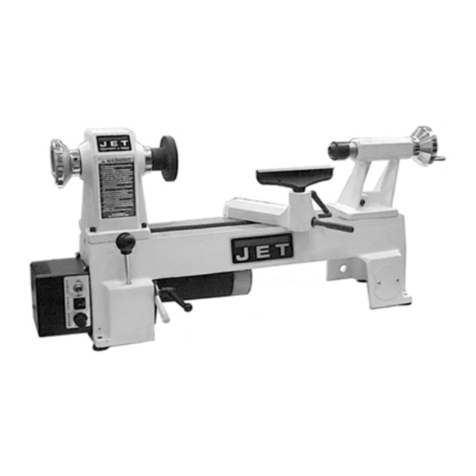Kval 777 Operation manual

Innovation, Quality & Honesty
Operation and Service Manual
Published: May 14, 2019
777 Operation and Service Manual
777 Flat Back Bi-Fold Machine

KVAL 777 Operation/Service Manual
Proprietary Notice
This Manual is confidential and contains proprietary information and intellectual
property of KVAL Inc., and is to be used solely by Customer as an operating manual
for KVAL Inc. machines. Neither this Manual nor any of the information contained
herein may be reproduced or disclosed under any circumstances without the express
written permission of KVAL Inc. For authorization to copy this information, please
call Kval Customer Support at (800) 553-5825 or fax (707) 762-0485. Outside the
U.S. and Canada, call (707) 762-7367.
Manual Part Number: DOC_76_2-OPSR
777 is a trademark of Kval Incorporated.
Copyright 2018 Kval Incorporated. All rights reserved.
Beckhoff® , TwinCAT 2® , and EtherCat® are registered trademarks and are licensed
by Beckhoff Automation GmbH
Windows 7® is a registered trademark of Microsoft Corporation.
All other products are trademarks or registered trademarks of their respective holders,
all rights reserved. Reference to these products is not intended to imply affiliation with
or sponsorship of Kval Incorporated.
Contacting KVAL
Customer Service: For further information about this manual or other Kval Incorpo-
rated products, contact the Customer Support Department
• Mailing address:
Customer Support Department
Kval Incorporated
825 Petaluma Boulevard South
Petaluma, CA 94952
• Phone and Fax:
In the U.S and Canada, call (800) 553-5825 or fax (707) 762-0485
Outside the U.S. and Canada, call (707) 762-7367 or fax (707) 762-0485
• Business hours:
Technical Support:
6:00 AM to 4:00 PM Pacific Standard Time, Monday through Thursday
6:30 AM to 1:30 PM Pacific Standard Time, Friday
Parts & Service Sales:
6:30 AM to 4:00 PM Pacific Standard Time, Monday through Thursday
6:30 AM to 1:30 PM Pacific Standard Time, Friday
(Other sales related inquiries: http://www.kvalinc.com)
• Email: [email protected]

KVAL777 Operation/Service Manual
KVAL 777 Operation/Service Manual
Your Feedback is Welcome: To help us design products that make your job easier
and your business more successful, we'd like to gain your perspective about your user
experience with our product - that is, the manual, the machinery, the software, etc.
What was easy or difficult to use or to learn? If you could change something about the
design, what would it be? Please email your comments and suggestions for improve-
ment to [email protected]. (NOTE: This is not a customer support email
link. For that, please refer to the Customer Service contact information above.) Thank
you!
http://www.kvalinc.com

KVAL 777 Operation/Service Manual

Table of Contents
KVAL 777 Hinge Application System
Chapter 1 Introduction to the 777
Chapter 1 at a Glance...........................................................................1-1
Overview of the 777................................................................. 1-2
Available Options..................................................................................1-2
About this Manual .................................................................................1-3
vSafety First!............................................................................ 1-4
Safety Sheet Sign-Off Sheet.................................................................1-4
Safety Terminology of Labels................................................................1-4
Safety Guidelines..................................................................................1-4
Lockout-Tagout Guidelines ...................................................... 1-8
Follow the P-R-O-P-E-R lockout rule of thumb.....................................1-8
Lockout Tagout Procedure....................................................... 1-9
Pre-Steps Before Lockout Tagout .........................................................1-9
Lockout Tagout Power ..........................................................................1-9
Lockout Tagout Air Supply ..................................................................1-10
Start Maintenance...............................................................................1-10
Post Maintenance Steps.....................................................................1-10
Zero-Energy to Start-Up........................................................... 1-11
Getting Help from KVAL........................................................... 1-13
On-Line Help.......................................................................................1-13
Product Return Procedure ..................................................................1-13
Safety Sign-Off Sheet .............................................................. 1-16
A Note to the Operator........................................................................1-16
Chapter 2 Operation of the 777
Kval 777 Process Summary .................................................... 2-2
Powering Operations for the 777 ............................................. 2-3
How to Power Up the 777.....................................................................2-3
How to Power Down the 777 ................................................................2-4
Stabilizing Heads at the End of Shift.....................................................2-4
Emergency Shutdown and Recovery ...................................................2-5
To Resume Normal Operation after an E-Stop .....................................2-5
Other safety controls can include: ........................................................2-5
Typical E-Stop Locations ......................................................................2-5
About the Safety Curtain.......................................................... 2-6
If the Field is Broken.............................................................................2-6
To Resume Normal Operation after an Field is Broken ........................2-6
Quick Start ............................................................................... 2-7

KVAL 777 Operation/Service Manual
Table of Contents
Set the Width to the Door ........................................................ 2-9
About the Hopper..................................................................... 2-10
Hopper Process..................................................................................2-10
Pre Sets Drill Locations ........................................................... 2-11
Adjusting Drill Height ..........................................................................2-12
Adjust for the Length of a Door................................................ 2-13
Adjust Drills for Door Length...............................................................2-14
Adjust the Stops to Different Door Length ..........................................2-15
Adjust the Heads to Different Door Length .........................................2-16
Tour of the Machine ................................................................. 2-17
Front View...........................................................................................2-17
Rear View ...........................................................................................2-17
About the 4 Shooters ............................................................... 2-18
4 Shooter ............................................................................................2-18
About the Hopper..................................................................... 2-19
Hopper Process..................................................................................2-19
Controls ................................................................................... 2-20
Main Control Box ................................................................................2-20
Machine Control Box ..........................................................................2-21
Start Sequence Buttons......................................................................2-21
The 777 Main Electrical Panel................................................. 2-22
Description of the Six Light Panel ........................................... 2-23
Chapter 3 Maintenance of the 777
Maintenance Schedule ............................................................ 3-2
300 Cycle Maintenance Steps ................................................. 3-4
Clean, Clean, Clean!.............................................................................3-4
600 Cycle Maintenance Steps ................................................. 3-5
Check Air Gauges and Inspect Water Traps ........................................3-5
Inspect Tooling......................................................................................3-5
Lubricate inside of Hopper....................................................................3-6
3,000 Cycle Maintenance Steps .............................................. 3-7
Inspect Feed Belts................................................................................3-7
Inspect Screw Drop Tubes on 4 Shooter..............................................3-7
Inspect all Photo Eyes ..........................................................................3-7
Inspect Limit Switches ..........................................................................3-8
Inspect Screw Receiver Parts...............................................................3-8

Table of Contents
KVAL 777 Hinge Application System
Inspect Airlines .....................................................................................3-9
Refill Lubricators ...................................................................................3-9
Grease Ball Screw Bearings...............................................................3-10
Clean Bearing Shafts..........................................................................3-10
12,000 Cycle Maintenance Steps ............................................ 3-11
Inspect Chains for Proper Tension......................................................3-11
Inspect Air Cylinders...........................................................................3-11
Inspect Ball Rail Shafts and Ball Screws ............................................3-11
Clean and Lubricate Slides, Cylinder Rods and Bearing Shafts.........3-12
Clean Inside Hopper ...........................................................................3-12
72,000 Cycle Maintenance Steps ............................................ 3-13
Inspect Nuts and Bolts........................................................................3-13
Electrical .............................................................................................3-13
Wash Filter and Lubricator Bowls .......................................................3-13
Tool Changing Schedule.......................................................... 3-14
Lubrication Schedule ............................................................... 3-15
Typical Lubrication Kit.........................................................................3-15
Lubrication Requirements........................................................ 3-16
Pillow Block Bearing Housings ...........................................................3-16
Flange Bearing Housings ...................................................................3-17
Ball Rail Bearing .................................................................................3-17
Pulley and Idler Shafts........................................................................3-18
Sample of Grease Locations for 777 ....................................... 3-19
Grease Locations on Frame of 777 ....................................................3-19
Grease Locations 4-Shooter Bearings................................................3-21
Description of Air Input System ............................................... 3-22
Air Input with Lubrication ...................................................................3-22
Air Line Without Lubricator .................................................................3-23
Remove and Replace the Screw Driver Bits............................ 3-24
Chapter 4 Troubleshooting the 777
About a Typical Contactor Control ........................................... 4-2
About Contactor Troubleshooting .........................................................4-3
About Typical VFD Motor Drive Control................................... 4-4
About the VFD ......................................................................................4-5
About VFD Troubleshooting .................................................................4-6
About a Typical Pneumatic Circuit ........................................... 4-7
Typical Pneumatic Assembly ................................................................4-8

KVAL 777 Operation/Service Manual
Table of Contents
About the Coil (Solenoid)......................................................................4-8
About Cylinder Operation .....................................................................4-9
How the Pneumatic System Works ......................................................4-9
Important Notice about Adjusting Cylinder Speed ..............................4-11
Adjusting Cylinder Extend Speed .......................................................4-12
Adjusting Cylinder Retraction Speed .................................................4-12
Using Sensors to Trouble Shoot.............................................. 4-13
Troubleshooting Electrical Problems ....................................... 4-14
If the Power Stops During Normal Operation......................................4-14
Troubleshooting with the Status Light Panel ........................... 4-16

1-1
KVAL 777 Operation/Service Manual
CHAPTER 1 Introduction to the 777
This chapter provides an overview of the KVAL 777 Flat Back Bi-fold Machine.
Included is important safety Information and Lockout Tagout procedures.
Chapter 1 at a Glance
The following information is available in this chapter:
TABLE 1- 1. Summary of Chapter
Section Name Summary Page
Overview of the 777 This section provides an overview of the
machine. It includes a general description and
a table of available options
page 1-2
Safety First! IMPORTANT safety information is described in
this section
page 1-4
Lockout-Tagout Guidelines Procedures describing Lockout Tagout. page 1-8
Zero-Energy to Start-Up Procedure to power up your machine for the
first time.
page 1-11
Getting Help from KVAL This section describes the method to contact
the KVAL service center for help. The section
includes how to get information from the speci-
fication plate tor provide to KVAL, service cen-
ter hours, and return procedures
page 1-13
Safety Sign-Off Sheet A record to track operators that are trained on
the machine.
page 1-16

Overview of the 777
KVAL 777 Operation/Service Manual
1-2
Overview of the 777
KVAL's Model 777 Flat Back Bi-Fold Machine is
designed to install flat back hinges on bi-fold doors. This
machine has a structural frame with four drill stations and
three hinge application stations. The basic machine
includes set up for 6’8” and 6’6” doors with hinge appli-
cation units set on fixed centers.
Door width is adjustable from 8-3/4” to 24”. Thickness is
adjustable from 1-1/6” to 1-3/8”.
The 777 includes spring loaded wheels to support the pan-
els as they are fed into the machine. Dual off-feed belts
are provided to move finished doors out of the machine,
so the next pair can be inserted.
Method of operation includes placing a pair of doors in machine and clamping them. Hinges can
be placed in machine during cycle operation so they are in position when machine is actuated.
Four drills move in to drill for pivot hardware. Hinges are manually placed and screws are auto-
matically dispensed to attach hinges simultaneously. The machine then releases the doors and
another operator removes them manually from the off-feed side. Factory service trip included in
the price.
Available Options
TABLE 1-2. Options
Options Title Descriptions
Option A 8'0" Door Capacity To make machine adjustable to drill for the top and bottom pivot
holes in door up to 8'-0", and adjustment of the two outside screw-
driver units to change center-to-center distance of hinges to
attach three hinges on doors up to 8’0" in length. Option also
includes upgrade to linear bearing slides and adjustment for end
drilling units.
Option E Extra Screwdriver
Head
A fourth screwdriver head to add 8'0" door capability.

Overview of the 777
1-3
KVAL 777 Operation/Service Manual
About this Manual
This manual contains operation information and service and maintenance information.
It includes identification of machine assemblies, power-up and power-down steps, and informa-
tion about using the user interface.
The Troubleshooting and Maintenance sections are directed toward qualified ser-
vice technicians only.
Operation/ Service Manual includes the following:
Chapter Description
Chapter 1 Introduction Descriptions of Machine Line and
Safety Information.
Chapter 2 Operation Interface Descriptions of how to power machine
line, and operator interface user
screens.
Chapter 3 Title Information about Maintenance of the
machines
Chapter 4 Troubleshooting Troubleshooing Tips

vSafety First!
KVAL 777 Operation/Service Manual
1-4
vSafety First!
This machine is a powerful electro-mechanical motion control
system. You should test your motion system for safety under
all potential conditions. Failure to do so can result in dam-
age to equipment and/or serious injury to personnel.
Safety Sheet Sign-Off Sheet
At the end of this chapter, there is a safety sign-off sheet. It lists personnel and machine safety cri-
teria to understand before operating the machine. It is highly recommended that personnel operat-
ing, working on a machine meet the criteria listed in this sheet. It is recommended the sheet be
signed and kept for records. See “Safety Sign-Off Sheet” on page 1-16.
Safety Terminology of Labels
In addition to the nameplate, KVAL machines may have other warning labels or decals that pro-
vide safety information to operators. Safety labels should be clearly visible to the operator and
must be replaced if missing, damaged, or illegible.
There are three types of warning labels or decals:
• DANGER means if the danger is not avoided, it will cause death or serious injury.
• WARNING means if the warning is not heeded, it can cause death or serious
injury.
• CAUTION means if the precaution is not taken, it may cause minor or moderate
injury.
Safety Guidelines
In addition to the caution and warning labels affixed to this machine, follow the guidelines below
to help ensure the safety of equipment and personnel.
Ensure that all employees who operate this machine
are aware of and adhere to all safety precautions
posted on the machine and are trained to operate this
machine in a safe manner.
Training

Never operate the machine without proper eye and
ear protection.
Protective Gear
• Never reach hands beyond safety cage. Servo
motors can unexpectedly move quickly.
• Never clear screws or hinges out of the machine
while it is running.
• Never reach into the router area to retrieve a
hinge. The router may still be running down
after shut down.
• Never perform any maintenance unless machine
is at zero state.
• Never clean the machine while it is running.
• Never walk away from the machine while it is
running.
When the Machine is ON
The compressed air system connected to this
machine should have a three-way air valve
for shut-off and pressure relief.
All cylinders on machine are under high
pressure and can be very dangerous when
activated. Before performing any mainte-
nance or repairs on this machine turn off the
main air disconnect. Lockout and tagout
this connection.
See “Lockout Tagout Procedure” on
page 1-9.
Compressed Air
vSafety First!
1-5
KVAL 777 Operation/Service Manual

Electrical circuitry on this
machine is protected by an
approved lockable disconnect
circuit. In addition to this equip-
ment, you must install an
approved disconnect for the
electrical power supplying this
machine.
When opening the cabinet you must first turn off the
disconnect switch. When the cabinet door is open there
is still power on the top side of the disconnect switch.
Some machines are powered by more than one supply
located at different locations. Before performing any repairs or mainte-
nance, lockout and tagout must be installed at all locations
All maintenance and repairs to electrical circuitry should only be per-
formed by a qualified electrician.
Still has power
in OFF position
Electrical
Prior to performing any maintenance, repairs,
cleaning or when clearing jammed debris, you
must disconnect, tag out, or lock out the electrical
and air pressure systems. This should be done in
accordance with applicable state and/or federal
code requirements.
Before Conducting Maintenance
Laser Warnings
On some machines, laser indicators are used to set boundaries. Follow the
manufacturers safety precautions.
vSafety First!
KVAL 777 Operation/Service Manual
1-6

KVAL advises that you request an on-site state
safety review of your installation of this
machine. This is to ensure conformance to any
additional specific safety and health regula-
tions which apply in your geographic area.
Compliance with Codes and Regulations
Other Hazard Control Action
Report a Hazard
Before You Report an Accident
If you believe any part or operation of this machine is in
violation of any health or safety regulation, STOP pro-
duction. It is your responsibility to immediately protect
your employees against any such hazard.
Additional detailed safety guidelines are included in the
operating instructions of this manual. KVAL will be
pleased to review with you any questions you may have
regarding the safe operation of this machine
Follow Your Company’s Safety Procedures
In addition to these safety guidelines. Your company
should have on-site and machine specific safety proce-
dures to follow.
vSafety First!
1-7
KVAL 777 Operation/Service Manual

Lockout-Tagout Guidelines
KVAL 777 Operation/Service Manual
1-8
Lockout-Tagout Guidelines
• Place a tag on all padlocks. On the tag, each
operator must put their own name and date.
(These locks are only to be removed by the
person who signs the tag)
• If more than one person is working on the
machine, each additional person places a lock
and tag on each disconnect.
• Only each operator may remove their own
lock and tag.
Important: When many people are all working
on the same machine you will need a multiple
lockout device, such as the one shown here.
Follow the P-R-O-P-E-R lockout rule of thumb.
P...... Process shutdown
R ...... Recognize energy type (electrical, pneumatic, mechanical, etc.)
O...... OFF! Shut off all power sources and isolating devices
P...... Place lock and tag
E...... ENERGY: Release stored energy to a zero-energy state
R ...... Recheck controls and test to ensure they are in the “OFF” state

Lockout Tagout Procedure
1-9
KVAL 777 Operation/Service Manual
Lockout Tagout Procedure
This policy is required by OSHA regulation 1910.147 and Cal OSHA’ S
SB198 ruling of July 1991.
Use the following lockout procedure to secure this machine while it is
powered down. During a lockout, you disconnect all power and shut
off the air supply. Be sure to use the tagout guidelines noted below.
Pre-Steps Before Lockout Tagout
1. Evaluate the equipment to fully understand all energy sources (multiple electrical
supplies, air supply and pressure, spring tension, weight shifts, etc.).
2. Inform all affected personnel of the eminent shutdown, and the duration of the
shutdown.
3. Obtain locks, keys, and tags from your employer’s lockout center.
Lockout Tagout Power
4. Turn off machine. See Chapter 2 for power down and power up procedures.
5. Turn the disconnect switches on ALL electrical and frequency panels to the OFF
position. Then push the red tab to pop it out. Place a padlock through the hole.
Place your tag on the padlock, as per the tagout guidelines below. (see illustration
below).
Power
Note: When multiple people are working on the machine, each person needs to
have a lock on the handle in the extra holes provided.
Insert Lock into hole.
Turn Switch to the
OFF position
Lock and Tag out

Lockout Tagout Procedure
KVAL 777 Operation/Service Manual
1-10
Lockout Tagout Air Supply
6. Turn all air valves to the OFF position and place a pad-
lock through the hole (see illustration below).
NOTE: Place your tag on the padlock, as per the
tagout guidelines.
Start Maintenance
7. Once the locks and tags are in place and all personnel are clear, attempt to operate
the machine to ensure equipment will not operate.
8. Maintenance or repairs may started.
Post Maintenance Steps
9. After maintenance is completed, the person performing the work must ensure all
tools, spare parts, test equipment, etc., are completely removed and that all guards
and safety devices are installed.
10. Before removing the locks and tags, the person who attached them shall inspect the
equipment to ensure that the machine will not be put in an unsafe condition when
re-energized.
11. The lock and tag can now be removed (only by the person(s) who placed them),
and the machine can be re-energized.
12. The tags must be destroyed and the locks and keys returned to the lockout center.

Zero-Energy to Start-Up
1-11
KVAL 777 Operation/Service Manual
Zero-Energy to Start-Up
Starting the equipment properly is just as important as the lockout/tagout guidelines in terms of
safety.
Start-up Guidelines
The following guidelines below should be followed to start the equipment.
Inspect
The equipment must be inspected for proper adjustment before starting equipment.
Clean Up
All materials and debris must be cleaned up. Any combustible materials or old parts
used during repairs must be cleaned up and/or properly disposed of.
Replace Guards
Replace all equipment guards. If part of equipment cannot be properly adjusted after
start-up with guard on, contact the KVAL Service team. See “Getting Help from
KVAL” on page 1-13.
Check Controls
Confirm that all switches are in the “OFF” position. Please be advised that some com-
ponents of the machine may start automatically when energy is restored.
Remove Locks
Each operator must remove his or her own lock and tag. This will ensure that all oper-
ators are in a safe place when the equipment is started.
Perform Visual Checks
If the equipment is too large to see all around it, station personnel around the area and
sound the personnel alarm before starting the equipment. If your operation is more
complex, your company’s comprehensive safety procedure may involve additional
steps. You will need to ask your supervisor about these procedures. The company’s
lockout procedure should be posted at each machine. On larger or long-term mainte-
nance or installation projects, the company’s procedures must be explained to all new
operators and a copy of the company’s procedures should be posted on-site for the
duration of the work.
The Company’s procedures should also include provisions for safely handling shift
changes and changes in operators or new operators.Comprehensive lockout/tagout
may use a gang box or other system to ensure that locks are secure and not removed
without authorization.

Zero-Energy to Start-Up
KVAL 777 Operation/Service Manual
1-12
Remember, lockout/tagout procedures work because you are the only one with the key
to your lock. Proper lockout/tagout can save lives, limbs, and money. Help make your
work environment safe for you and your fellow workers. Be sure to follow the P-R-O-
P-E-R lockout/tagout procedures, and that those around you do also.
Close the Cage Gate
Verify all cage gates are securely closed. Ensure all safety protocols are in effect.
Table of contents
Other Kval Lathe manuals
Popular Lathe manuals by other brands
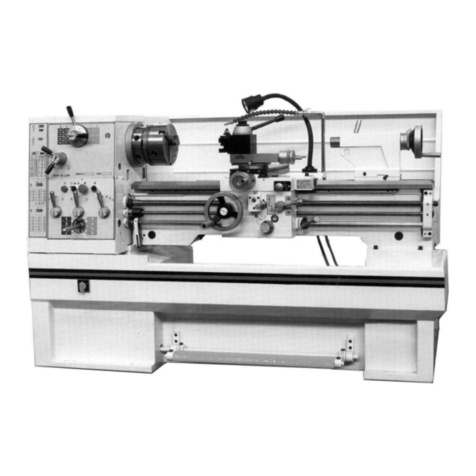
YANGZHOU SUPER MACHINE TOOL
YANGZHOU SUPER MACHINE TOOL CD6240 Instruction manual and parts list
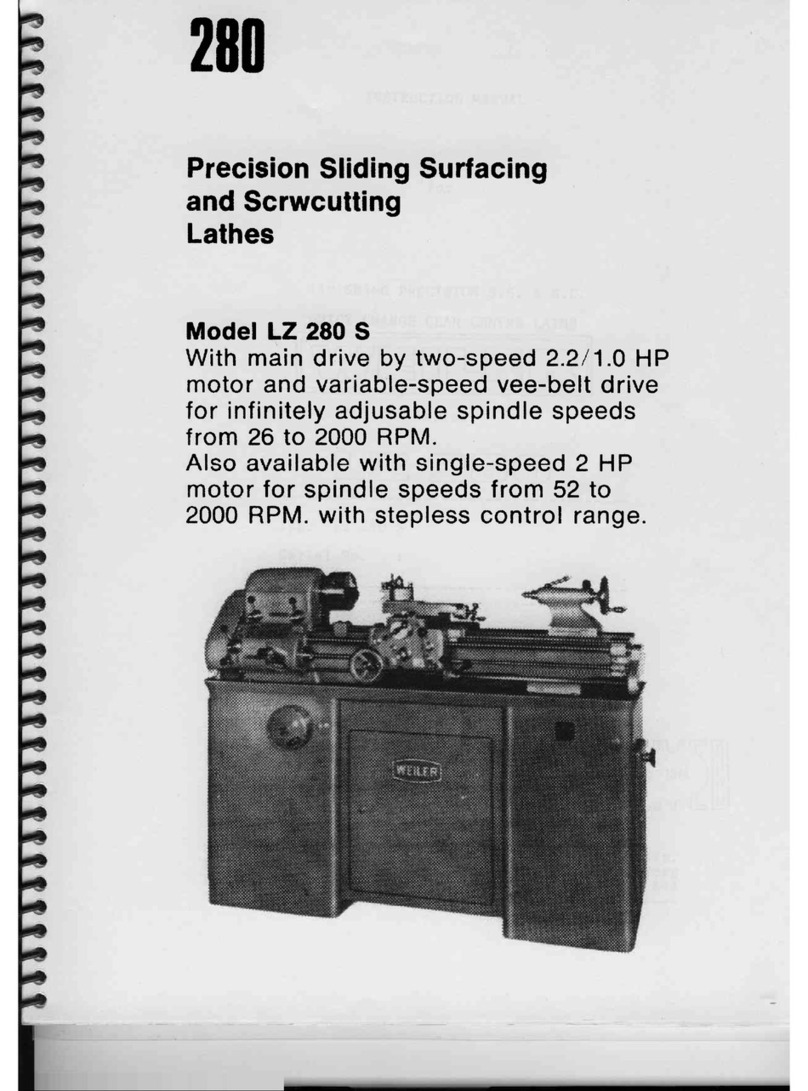
Weiler
Weiler LZ 280 S instruction manual

Makita
Makita 2012NB instruction manual
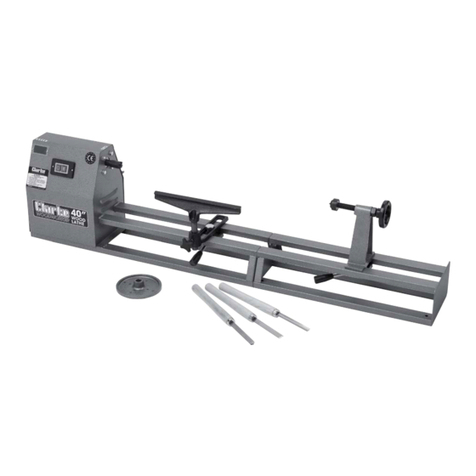
Clarke
Clarke Woodworker CWL1000 Operating & maintenance instructions
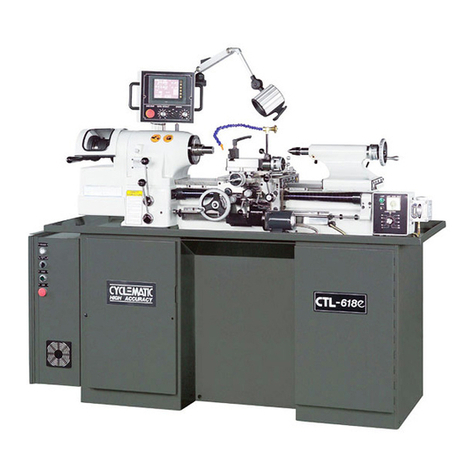
CYCLEMATIC
CYCLEMATIC CTL-618e Operation manual
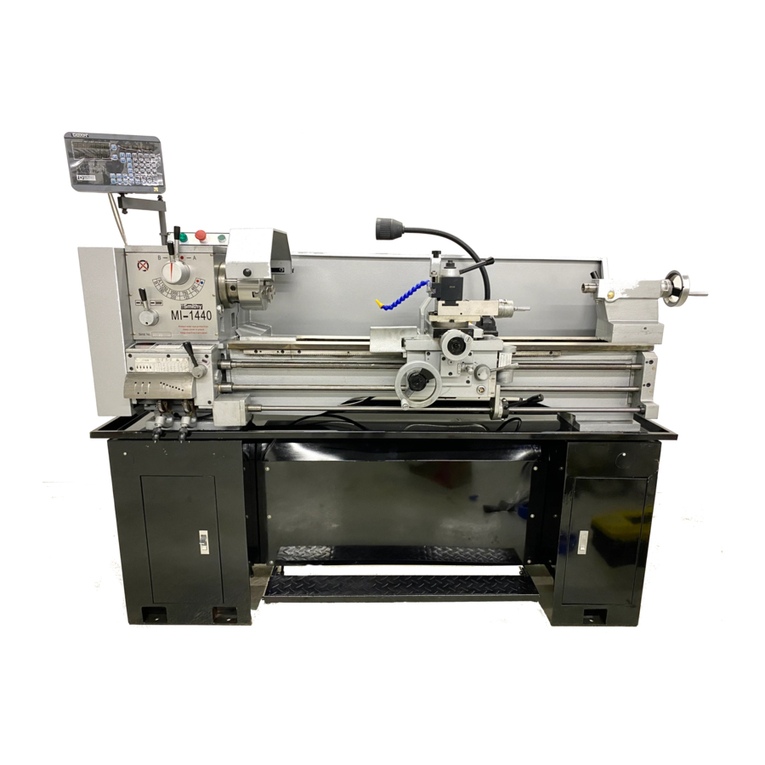
Smithy
Smithy MI-1440L Operator's manual
